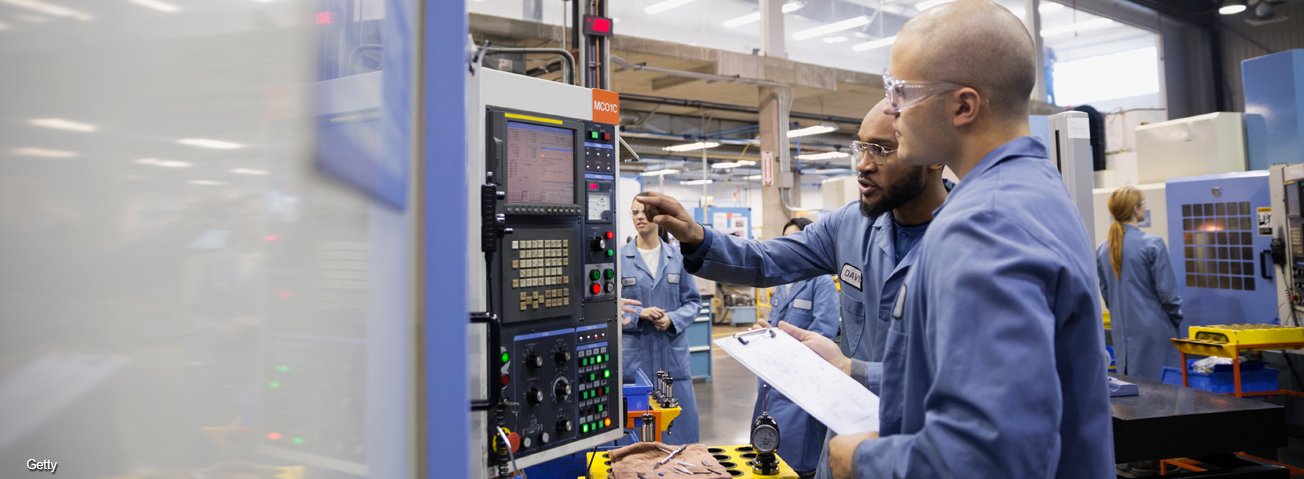
Innovation Can Make Rural Manufacturers More Resilient
- by Tim Wojan
- 10/1/2018
Does the degree of innovation make a difference in the survival of rural manufacturers? Answering this question requires a way of classifying manufacturers as non-innovators, incremental innovators, or more far-ranging innovators. It also requires a sufficiently long time period to compare whether the degree of innovation affected survival chances.
ERS researchers examined a set of manufacturing plants that were surveyed in 1996 and again in 2013. The 2013 survey included questions on whether the establishment had introduced new or significantly improved products, processes, marketing methods, or logistics processes as well as additional questions aimed at detecting the level of innovation. Non-innovators were identified as businesses that did not indicate existence of a continuous improvement program in 2013. At the other end of the spectrum, far-ranging (“substantive”) innovators had embarked on continuous improvement programs, but they also protected intellectual property, experienced innovation capital constraints, and recognized failed innovation projects—behaviors believed to characterize innovators substantially reconfiguring or redesigning products and processes. Incremental innovators fall between those two categories. These establishments tended to make improvements, but improvement efforts were relatively limited.
Compared to a representative sample of all rural manufacturing plants, the “long-lived” rural manufacturing plants represented in both the 1996 and 2013 surveys were:
- More likely to be far-ranging innovators (58 percent versus 33 percent).
- Less likely to be non-innovators (17 percent versus 34 percent for all).
- And nearly as likely to be incremental innovators (26 percent versus 33 percent).
This raises the question of whether manufacturing plants classified as more far-ranging innovators in 1996 were more likely to survive relative to non-innovators and incremental innovators. Researchers examined this question with a focus on the survival of standalone, or single-unit, firms—rather than those that are branch plants. In a multi-unit firm including a number of separate business locations, the degree of innovation within each branch plant might differ from that of the company as a whole. This makes it difficult to reliably classify the innovation of these plants.
Over a 17-year period, standalone firms estimated to be incremental or more far-ranging innovators in 1996 were more likely to survive than a non-innovator peer in any given year. By 2013, about 55 percent of standalone firms estimated to be incremental or more far-ranging innovators in 1996 survived—compared to 49 percent of non-innovators.
The steep decline in the survival rate of non-innovators prior to 2004 was due in part to trade policy changes for textile and apparel industries, which may have protected less competitive plants. The similarly fast rate of exit for more far-ranging innovators over the same period stemmed partly from the 2001 recession, which impacted some high-tech sectors severely. The flattening of all three survival lines since 2005 was likely due to the majority of surviving plants shifting to more far-ranging innovation strategies from their 1996 innovation classification.
This article is drawn from:
- “Varieties of Innovation and Business Survival: Does Pursuit of Incremental or More Far-Ranging Innovation Make Manufacturing Establishments More Resilient?” by Timothy R. Wojan, Daniel Crown, and Anil Rupasingha. (2018). Research Policy.
You may also like:
- Wojan, T. & Parker, T. (2017). Innovation in the Rural Nonfarm Economy: Its Effect on Job and Earnings Growth, 2010-2014. U.S. Department of Agriculture, Economic Research Service. ERR-238.


